The Interview Piece & Love

A pioneer in the puzzle revival, French brand Piece & Love is making us laugh and smile with its creations, which have been proudly displayed in homes for 4 years now. We caught up with the brand's founder, Manon Allender, who spoke to us from Lille, where she is visiting her family and where she came up with the idea of defying clichés with ‘new generation’ jigsaw puzzles: fun, beautiful and eco-responsible!
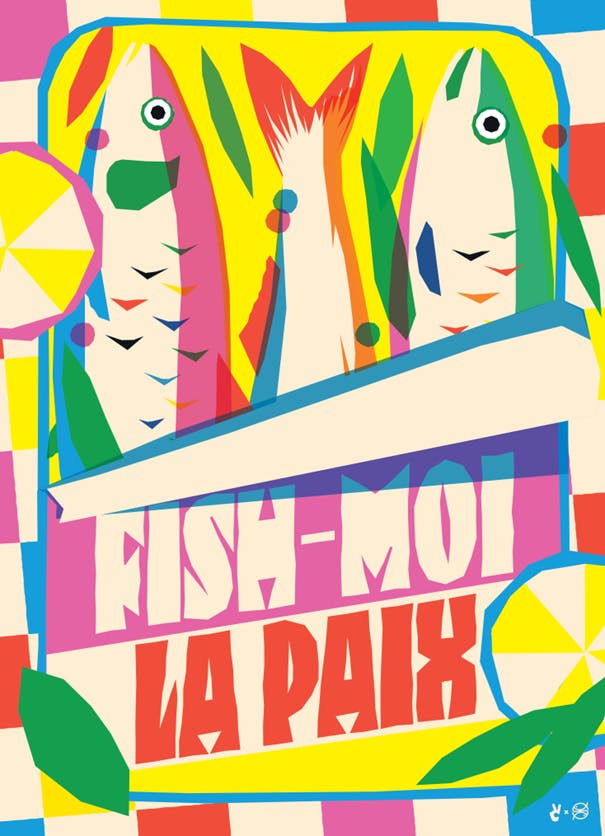
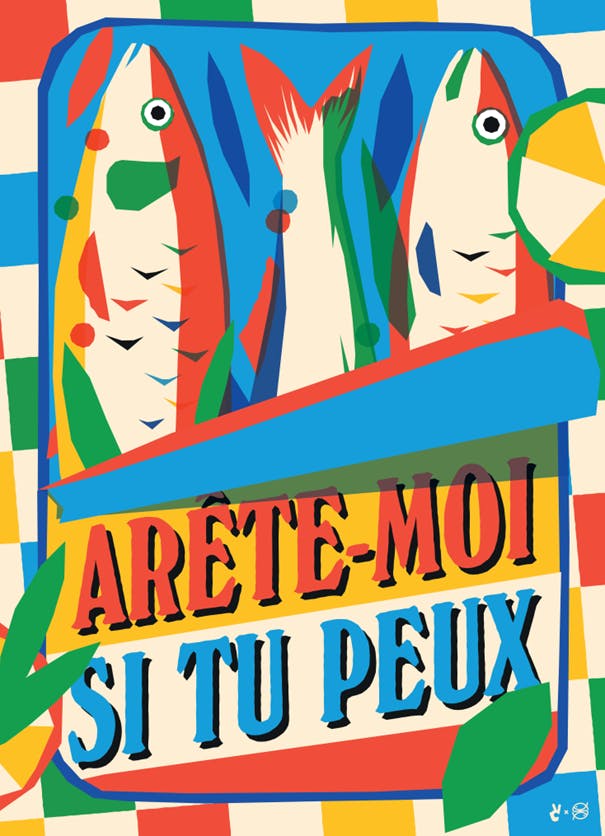
Can you tell us about the beginnings of Piece & Love? Where did the idea to revolutionise the jigsaw puzzle come from?
It came to me in 2020, between two confinements, during a weekend at my parents' house. My mum was doing a jigsaw puzzle, so I started too. I hadn't done one for ages, and I loved the moment and the activity! But as the jigsaw she'd chosen was really ugly, I teased her about it, and she said: ‘Try to find a nice one, you'll see, it's difficult’, and that's where it all started.
Back in Paris, I went to see Anatole, my partner, who is a graphic designer. We hadn't been together that long and I was apprehensive about his reaction... I was afraid he'd tell me to get lost because he thought I was too old-fashioned with my puzzle idea, but not at all! He bounced right back with the name ‘Piece & Love’, and it fitted perfectly with the energy of peace and relaxation, the positive message, that I wanted to spread...
Then we listed all the possible and imaginable clichés when it comes to jigsaw puzzles, with the aim of breaking all the existing codes, and we asked ourselves: ‘Why do we start doing a jigsaw puzzle? Well, because we're bored!‘ So we decided to write simply: ‘Je m'emmerdais’ (‘I was bored’). The visual reproduced a grandmother's vintage tapestry, at odds with the slightly ‘shock’ slogan. And that's how our 1st puzzle came about!
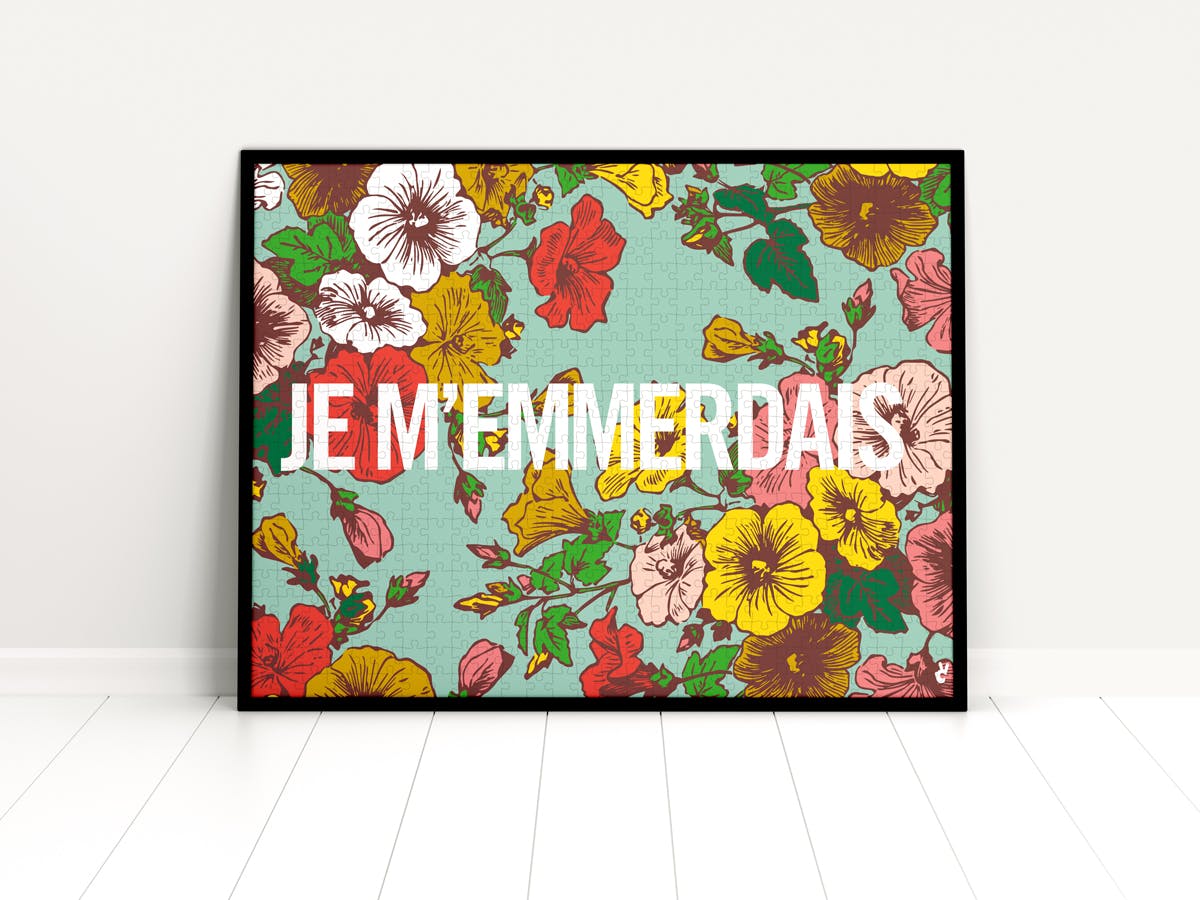
What is the creative process at Piece & Love? Where do you draw your inspiration from?
Most of the puzzles are imagined and designed by Anatole, with whom I work hand in hand on partnerships, such as the belle-iloise. Based on discussions with the partner and their brand universe, we determine the message, the style, the reaction we want to provoke... Anatole is full of ideas, so we work a lot as a duo, like ping-pong. The ideas mature in our heads and, after a while, we know we've got the right one!
Humour is at the heart of our work, because our mantra is to bring freshness and lightness to everyday life. Aesthetics are also important: the visuals have to be appealing to make the activity more attractive, and we're moving forward with the idea that our puzzles, once assembled, can be displayed like a painting, an art object...
I also work with other artists to offer a diversity of styles in our creations - like one of our latest models, entitled 2024, imagined on the theme of the Olympic Games by Louis Torres, an independent illustrator with a very pronounced graphic style.
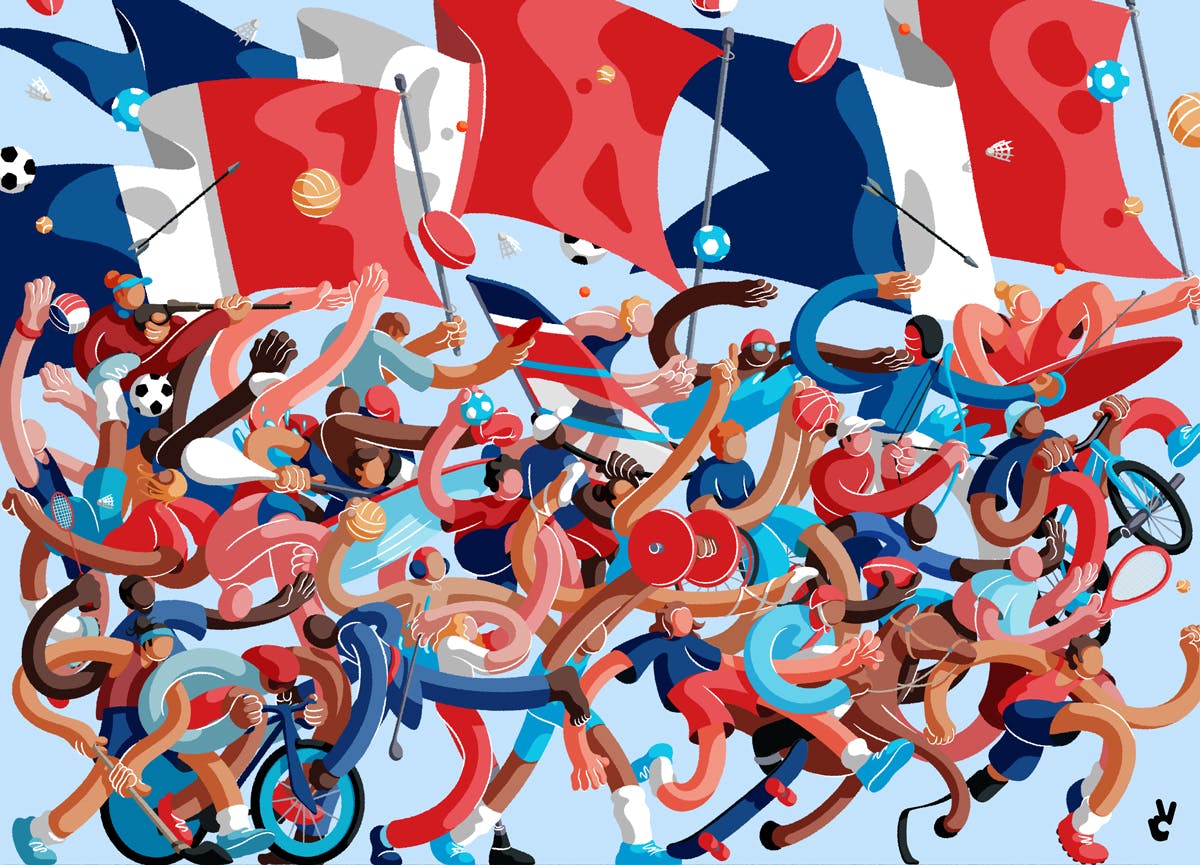
What's the main challenge when designing a puzzle?
Our challenge is the instant reaction that the puzzle will provoke once the person has understood the message. The aim is for people to see the puzzle, get the idea and simply laugh!
The visual of the puzzle and the play on words form a quirky combination that, like a joke, sticks in people's minds. And even if you can't remember exactly how it was put, you remember that you smiled, and that positive feeling remains with you as a fond memory.
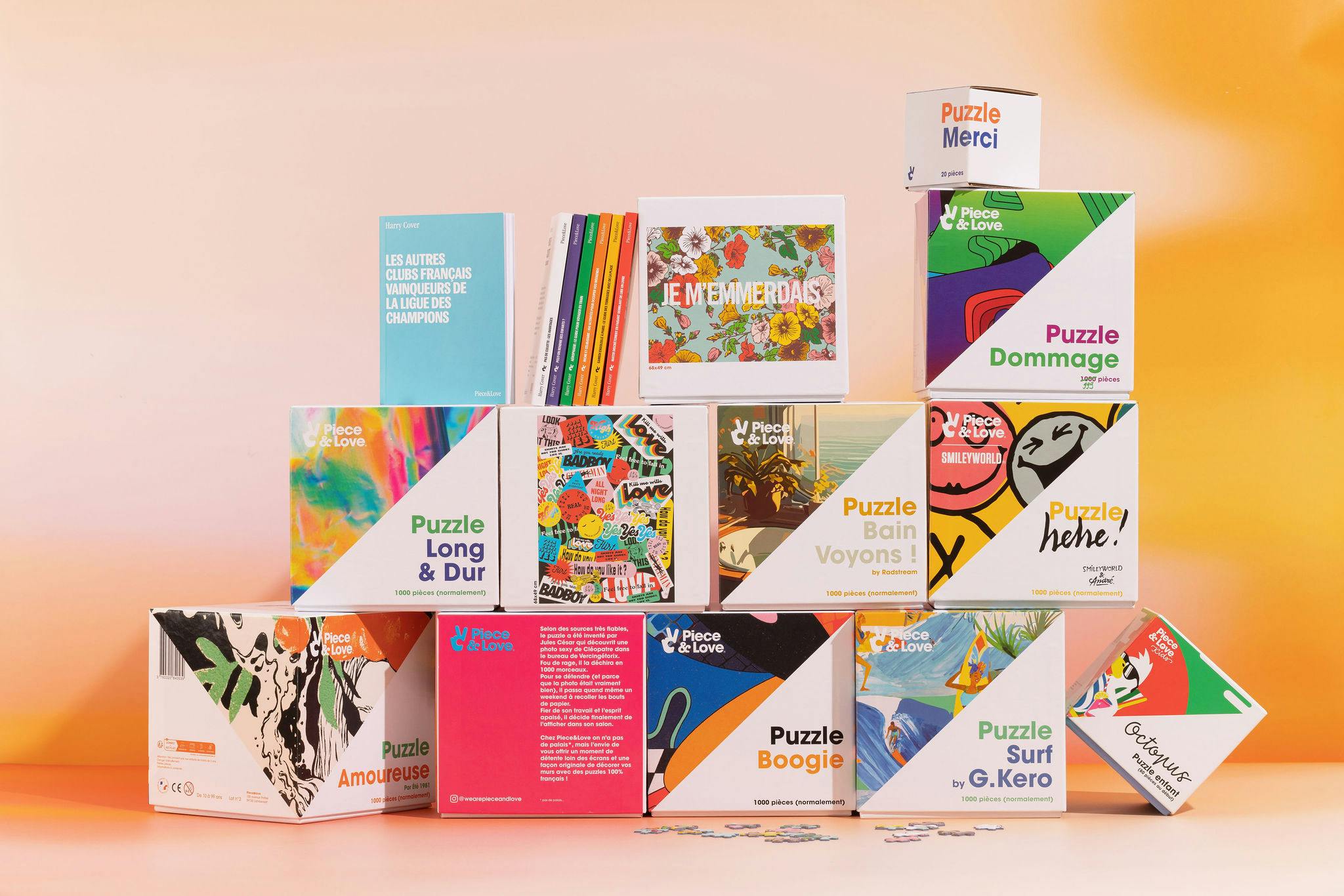
Your puzzles are made in France, without plastic, and from recycled cardboard: is eco-responsible manufacturing important?
It's the basis! Right from the start, even before I knew how to make a jigsaw puzzle, without knowing anything about the industry, I said to myself: ‘A jigsaw puzzle is a simple product, we have to make it as well as we can. To offer a genuine moment of disconnection, all the value of the product has to be part of a coherent whole’. And I quickly realised that there was no such thing as a ‘Made in France’ jigsaw puzzle at the time!
I approached a company specialising in board games near Troyes, and it worked. Puzzles weren't the mainstay of their business at all, until we came along and the puzzle trend took off again, and the whole sector got a boost!
Can you tell us about jigsaw puzzles as a hobby or activity?
When I was a child, jigsaw puzzles were something I did in the summer, on holiday with my grandparents in the South of France. Between midday and 3pm it was too hot to go to the beach, so we'd have to stay in the shade, and I'd do jigsaw puzzles with my cousins, my aunts and uncles, my grandmother... I've always found it a relaxing activity, where you don't have to think about much, and which has the advantage of bringing everyone together, children and adults!
What's more, it's a meditative leisure activity that's great for your health, improving concentration, observation and memory... Its cognitive virtues and neurological benefits have been recognised by scientists: by getting 8 areas of the brain working at the same time, it's highly recommended for combating degenerative diseases. It really is a very complete activity - for me, it's brain yoga!

These days, I think we find it hard to take time for ourselves, and we all need to relearn how to relax. The jigsaw puzzle invites you to disconnect from your screens, and it's easy to be surprised, because you can easily spend hours doing it! You can do it in silence or while listening to music, with an herbal tea or a glass of wine, alone or with others, with your family or with friends.
Some of our customers have puzzle evenings every week: they have an aperitif and chat over a puzzle, and I think that's so much fun!

How long does it take to put together a 1000-piece jigsaw puzzle?
It varies a lot from one jigsaw to another, depending on the visuals, the colour patches, etc. For the same number of pieces, there are models that are more or less difficult to do, and therefore take more or less time. The more detail there is, the easier it is because you can sort the pieces beforehand and use them as markers to know where they go, in which zone. The more uniform the parts, the more painstaking and arduous the assembly!
On our website, we display difficulty levels to help people choose. For medium/standard difficulty, you should allow between 8 and 12 hours! The most complicated one we've released was called Tohu-Bohu, with a difficulty level of 10 out of 10, and I never managed to finish it myself!
On your website, it says: ‘According to very reliable sources, the puzzle was invented by Julius Caesar, who discovered a sexy photo of Cleopatra in Vercingetorix's office. Mad with rage, he tore it into 1,000 pieces. Is this story about Julius Caesar true?
No, it's a Piece & Love invention! The origin of the jigsaw puzzle is a bit hazy, so we've invented our own with our own sense of humour! (laughs)
Do you have a favourite puzzle that you're particularly proud of?
It's hard to choose because there are so many that I love, but first of all I have to give the ‘Je m'emmerdais’ puzzle its due, in other words, the glory of Piece & Love! It's the first one we designed, the one that put us on the map and made the brand a success... So of course I have to mention it!
In our latest designs, I love the FIND ME puzzle, which was designed by Marie Chevalier, a young graphic designer who did an internship with us and with whom we now work on a freelance basis. Her jigsaw puzzle is full of details, objects and characters drawn in a kind of ‘Where's Charlie?‘ style, and I really loved doing it!
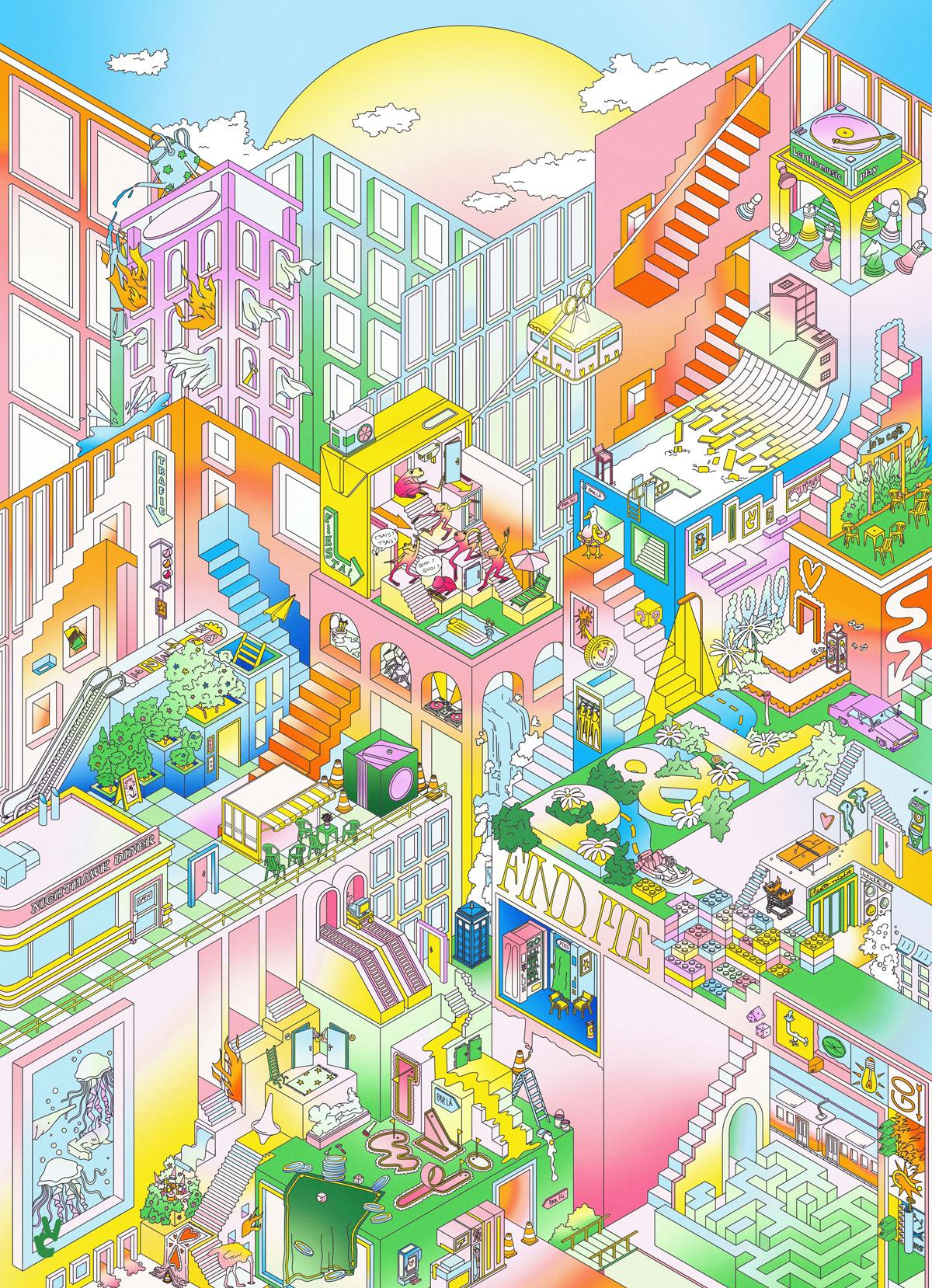
I also love the two la belle-iloise puzzles, especially FISH-MOI LA PAIX which I think is particularly gorgeous with its colours and message... A lot of people say to me: I absolutely want it at home so I can put it in my kitchen!
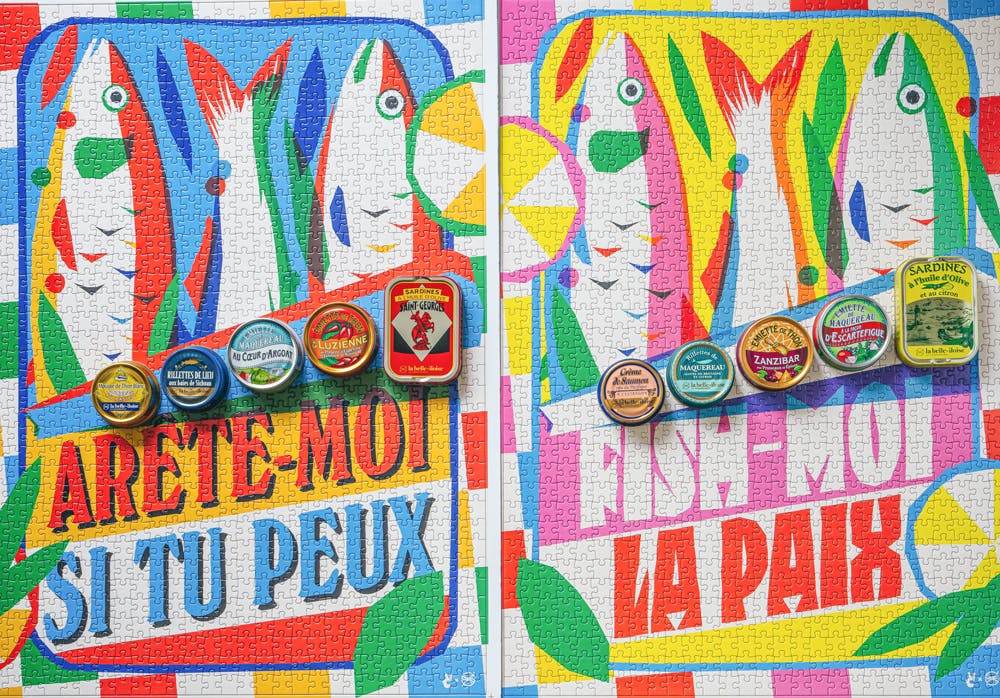
You can find all Piece & Love's creations at www.pieceandlove.fr, as well as a list of retailers throughout France and, more recently, abroad: concept stores, home decoration boutiques, independent retailers... and now exclusively in la belle-iloise shops with the two puzzle sets FISH-MOI LA PAIX and ARÊTE-MOI SI TU PEUX!









